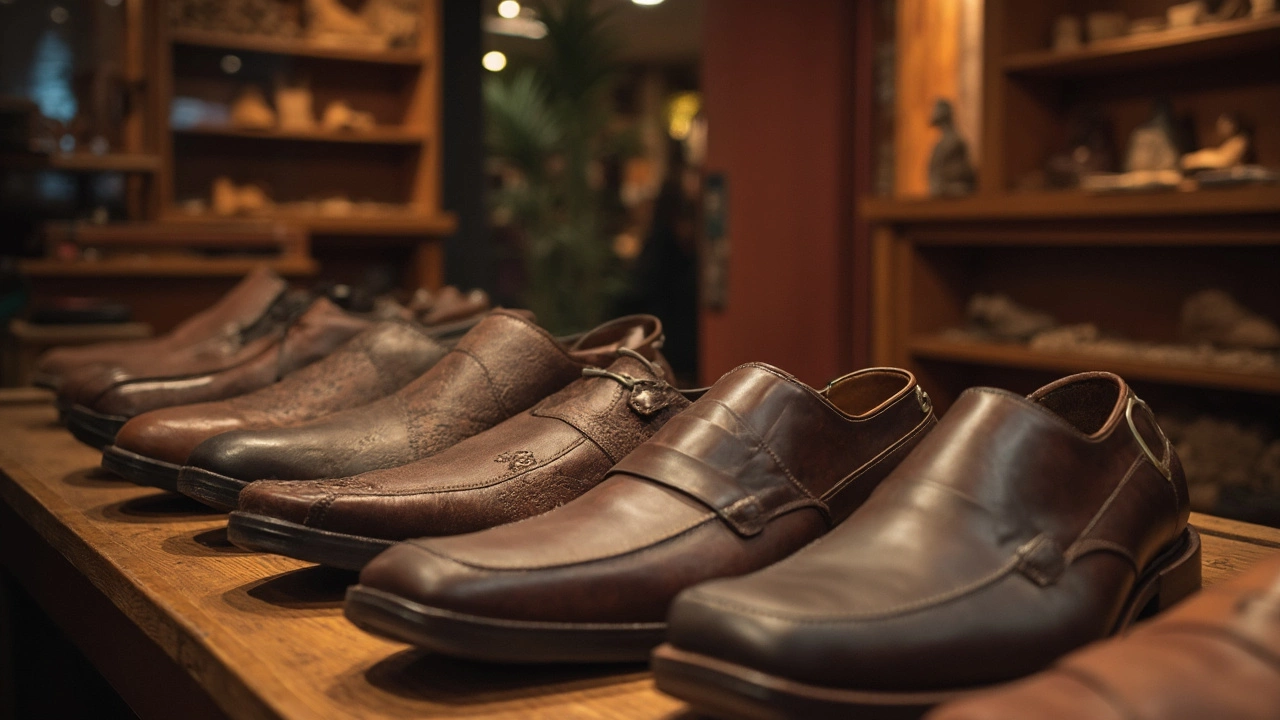Full Grain Leather: What It Is, Why It Matters, and How to Spot Real Quality
When you hear full grain leather, the top layer of animal hide with all its natural markings intact, prized for strength and aging beautifully over time. Also known as top grain leather, it’s not just a marketing term—it’s the foundation of shoes and bags that last decades, not seasons. This isn’t the cheap stuff you find in discount stores. It’s the real deal: unaltered, untreated, and uncorrected. No sanding, no spraying, no paint to hide scars. What you see—the wrinkles, the marks, the uneven texture—is the hide’s history. And that’s exactly why it lasts.
Compare that to top grain leather, the layer beneath full grain, often sanded and coated to create a uniform look, or worse, bonded leather, a mix of leather scraps and plastic glued together. Those might look fine at first, but they crack, peel, and fall apart after a year or two. Full grain leather does the opposite. It gets better with age. The oils from your skin, the weather, the wear—they all sink in and soften it. That’s why brands like Ecco, Clarks, and Thursday Boots use it for their best models. It’s not about looking new. It’s about looking earned.
How do you know you’re getting real full grain? Look for natural variations. If the surface looks too perfect, too uniform, it’s not. Run your fingers over it. Real full grain has a slight roughness, not a plastic smoothness. Smell it—genuine leather has a rich, earthy scent. Fake leather smells like chemicals. Check the edges. Real leather shows the layered fibers; fake leather has a painted or laminated edge. And if the price feels too good to be true? It probably is. A pair of boots made with real full grain leather won’t cost $50. They’ll cost $150, $250, even more. But they’ll still be on your feet ten years from now.
And that’s why this collection matters. You’ll find guides on how to fix wet leather shoes, how to tell if your boots are too big, why some leather shoes hurt your feet, and how to care for them so they last. You’ll learn why $200 suits sometimes use the same leather as your favorite boots, and why brands charge more—not because of logos, but because of the material under the surface. Whether you’re buying your first pair of real leather boots or trying to revive an old favorite, this isn’t about trends. It’s about substance. What you find here will help you choose better, care smarter, and wear longer.

High Quality Leather: What to Look for in Leather Shoes
Choosing high quality leather for shoes can make them last longer, look better, and feel more comfortable. From full grain to top grain, not all leather is made equal—some types wear out quickly while others get better with time. This article breaks down the different grades of leather, practical ways to tell them apart, and what makes one choice better than another. You’ll also pick up tips on spotting real quality the next time you’re eyeing up new shoes. Save money, avoid fakes, and treat your feet to the good stuff.
- posted by Elliot Marwood
- 30 April 2025
- Comments [ 0
]
-
Footwear
more
